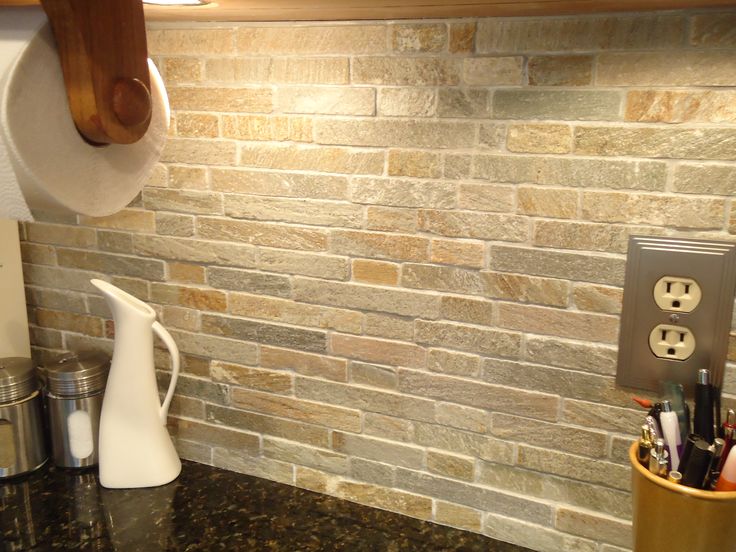Natural Stone Tiles: Beauty and Durability for Timeless Interiors
Posted by Mike Belk on Jul 26, 2023

There are times when hardwood floors or carpeting won't set the stage for the atmosphere you want in a room. Whether you're creating a casual or sophisticated décor, the right flooring could be natural stone tiles.
But the average homeowner knows far less about natural stone tiles than they do about hardwood and carpeting. That's why we're offering an introduction to the most popular types of natural stone tiles and how best to use them around your home.

What Are Natural Stone Tiles?
Natural stone tiles come from quarrying rock found in wilderness areas around the world, including the US. Natural stone is genuinely made of one or more minerals occurring without human intervention.
On the other hand, there are artificial tiles that mimic nature's work. Manufacturers will use a blend of stone materials and synthetic products to create a facsimile of various types of natural stone tiles.
Marble
Marble is always a stunning choice for flooring. It has a timeless quality, evoking the luxurious ancient palaces of Greece and Rome. It's the one stone sure to bring a sense of grandeur to a space.
Colors
One of the reasons marble is so versatile is because it's available in a wide variety of colors. For example, you can choose the classic white, black, or gray. But that still leaves yellow, green, red, pink, and brown.
Marble is also prized for the bold streaks of contrasting colors that run through it called veins. An example of the kind of dramatic presentation possible is black marble streaked with white veins.
Uses
Typically, you'll find it in bathrooms, home spas, entryways, and corridors. Of course, clever interior designers and homeowners have used marble creatively in other parts of the home. For example, marble is also popular in kitchens and home bars.
Durability
Marble looks as though it's too hard to damage, but it's actually a soft stone. So be careful. You can permanently stain marble with accidental spills of acidic liquids like balsamic vinegar in the kitchen or wine at the bar.
Marble flooring in the kitchen is also more likely to show scratches. But homeowners who love marble and want it in their kitchens shouldn't be afraid of maintaining tiles. Keeping a marble floor clean and looking great will require polishing to remove etching and scratches.
Travertine
Another ancient stone is travertine. It's the stone the Romans used to build the Colosseum. If you want a natural stone but with more warmth than marble, you might consider travertine.
Colors
Travertine doesn't have the attention-grabbing dots of color you find in granite. And it doesn't have the showy veins that paint marble.
Tracertine's colors generally reflect earth tones such as tan, ivory, rust, and gold. The colors swirl their way through the stone while remaining understated. The stone's subtleness lends itself to upscale design projects that call for a stylish but relaxing environment.
Texture
Travertine can have a rugged appearance to emphasize a rustic setting. Or you can choose a polished look for more contemporary home designs. In either case, travertine delivers a low-key color addition to your room.
The rustic look comes from travertine having a naturally pitted surface. As limestone forms, heat from hot springs causes carbon dioxide to escape the rock, leaving behind little empty spaces.
However, for indoor flooring, the surface is smoothed, and the travertine's indentations are filled in. The result is a floor with a smooth surface but still retaining its weathered appearance.
Uses
If you're using travertine tiles for something other than flooring, you might consider the more rugged look. The appearance works well with masculine dens and rooms where you want to emphasize outdoor life. For example, matte and pitted travertine seem at home around a fireplace in a mountain cabin or country home.
Durability
Travertine is porous when the pits remain unfilled. Homeowners use this quality to their advantage by using the stone in outdoor settings, where it can absorb water from pools and hot tubs. In addition, daily exposure to the elements will enhance the look of the stone, giving it more character.
Granite
Granite forms deep within the earth's surface thanks to crystallizing magma. But you don't have to be a scientist to recognize granite. Think of Mount Rushmore or the cliffs in Yosemite Valley.
Granite takes a long time to cool beneath the ground. Then it has to make its way to the surface. So, when you walk on granite flooring, you're walking on an ancient piece of history predating humans.
Colors
Granite's natural color comes from its abundance of minerals. Most granite is feldspar and quartz, but there are various other minerals present too.
Colors often have a reddish, gray, white, or pink appearance due to the feldspar. Quartz is often transparent but can also be gray.
Texture
You can recognize granite by its visible grain with crystals large enough to identify with the unaided eye. The grains or crystals can vary in size from one type of granite to another, offering variation in your choice of material.
Despite its grainy appearance, granite welcomes polishing. The result is a tile that offers interesting crystalline patterns while bolstering a smooth, shiny surface.
Uses and Durability
Granite is a material that's harder than marble and creates durable tile floors. Granite can stand up against hard use and is not easily damaged by scratches and cuts. And if you seal it, you won't have to worry about stains.
Plus, it's less prone to weathering. That works best for homeowners who prefer the coloring of their newly installed tiles to remain as close to that color as possible over its lifetime.
Its toughness makes it a good candidate for areas that handle a lot of foot traffic, such as entrances and corridors. It's also ideal for kitchens. If you mishandle a knife while using a cutting board and hit a granite surface, the stone will be fine.
Slate
Slate is a type of metamorphic rock. Slate is primarily clay minerals but can also harbor quartz, feldspar, and other minerals.
Texture
It has a fine grain, not the bold markings of granite. Because its grain is small, slate delivers an understated luxury with only gentle color variation.
Colors
Gray is the primary color of slate, but it comes in various shades. Blue is the next most common color. While gray and blue dominate, slate can also have enough undertones to give it the appearance of brown, green, purple, or black.
Uses
Slate is weather resistant. So, you often see it used for roofing on luxury homes. You also see it used for patios and walkways of homes of all types.
When you opt for slate tile flooring inside your home, you get the feeling of merging the outdoor and the indoor.
Durability
Slate is softer than other natural stone flooring, such as granite and marble. You wouldn't choose to use it in your home gym if it will have to endure abuse from heavy weights day after day. But slate has no problem withstanding the typical day-to-day family traffic.
Slate is also low maintenance. Its coloring doesn't readily show dirt. And if you chip a tile, the underneath color is the same as the surface color so the chip will be less noticeable.
Because slate is porous, you'll want to use a good slate sealer to protect your flooring and keep it looking good for much longer. Sealing tiles can keep a colorful, acidic spilled drink, such as red wine, from etching and coloring your floor.
Types of Finishes
Manufacturers can enhance the appearance of natural stone tiles by giving them various finishes. The options allow you to use the same stone throughout your home but with different effects.
Tumbled
Natural stone can have a tumbled finish for a rough-and-ready look. The texture will be obvious at a glance.
Tumbled finishes can make a stone less slippery. However, in general, any natural stone material in its raw condition will have quite a bit of texture.
Honed
When you need a more polished look but still want good traction, you might choose a honed finish. A honed finish delivers a smoother surface than a tumbled finish, but it's not super shiny. It has a matte appearance.
You can use it in rooms where you want a sophisticated look but are still concerned about someone slipping. For example, honed finishes are fine in the wet areas of your home, such as the bathroom, kitchen, and laundry room.
Polished
Polished tiles are great for the show-stopping areas of your home. Polished stone will add luster to your décor, making it a good choice for various decorating styles such as Hollywood Regency, glam, and Art Deco.
Remember that polishing a stone decreases its slip resistance. But you can combat that by coating the surface with an anti-slip formula whenever you clean.
Polished stone demands careful attention during the installation. The glossy finish will highlight any errors. So, choose only an experienced installer who can give you a smooth, level, and chip-free installation.
Renovate Your Room With Natural Stone Tiles
By now, you've probably formed a good idea about which type of stone would work best for your project. But you might still have questions.
That's great. We invite you to ask us any questions you have. Then we'll work with you to help you finalize your choice.
You can get started by contacting us today. The sooner we hear from you, the sooner we can begin installing your new natural stone tiles.



